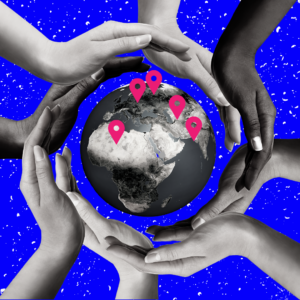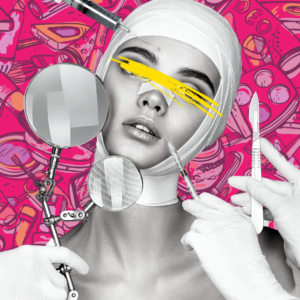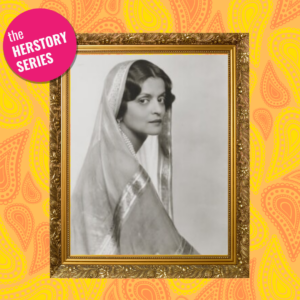In the 1980s women joined the workforce at a rapid rate, challenging the expectations set in post-war Western culture that women had done their part and now it was time for them to return to the kitchen and leave the artillery factories. By the end of the 1990s, a whole generation had grown up with the notion that women work, earn their own money, and subvert the 1950s model as a social norm. This led to an attitude at the change of the millennium that women had it all, they could work, live independently, and lead their own lives, in turn, this gave rise to the idea of ‘postfeminism’. Frankly, this was not an accurate assessment, and I would argue that sexism in the 2000s was a rampant part of everyday media.
The notion that in the Western world was that the fight for gender equality was over, men and women were equal and that was that. We know of course that this was not, and still is not the case. Postfeminism was a major buzzword going into the 2000s with publications like Time Magazine releasing cover stories titled ‘In the 80s women wanted it all, now they’ve plain had it. Is there a future for feminism?’ and a wave of TV shows emerging in the early years of the new decade such as Sex and the City and films such as Bridget Jones’ Diary which centred around the idea of the ‘postfeminist’.
The ideal of the independent city girl who follows strict feminine gender norms and ultimately aims to win a man’s heart became the face of aspirational female characters in the media. These characters all followed a similar streak, they were white, feminine, and centred their story arc on the dependence upon male gratification. And while this media itself is not inherently misogynistic, the fact this was the face of womanhood at the time shows us that in the eyes of society at the time, the fact women could work meant they had to pivot focus from that right, and towards the attention of men. Films and TV shows like the aforementioned and others such as 10 Things I Hate About You, Friends, and The Devil Wears Prada see women who are independent, empowered, and financially liberated find themselves leaning towards traditional gender roles and a focus on relationships with men as their primary goal and story arcs. I won’t lie, as much as I love The Devil Wears Prada I will never come to love the ending, Andy should have dropped her toxic boyfriend and lived happily ever after without him.
This is not to say that these films were not enjoyable or portrayed women who present new heights for female characters, this is also not to say that there were films of this era that are unambiguously empowering films for women still such as Legally Blonde and Erin Brockovich which do not centre romantic interests. However, the majority of this media portrays a dissatisfaction with this new landscape of choice and opportunity for women, struggling to find happiness in the supposed ‘postfeminist’ utopia, leading some to argue that these films and TV shows subliminally suggest happiness comes from heteronormative standards where women are more traditionally feminine and tied to masculine straight men. A lot of the media of the time also had quite complicated dynamics behind the scenes, particularly when filming sex scenes.
At this time it was incredibly common for women in the media to distance themselves from feminism as a movement, even outspoken feminist figures in today’s media like Lady Gaga at the start of her career candidly stated she was not a feminist because “she didn’t hate men”. This doubles down on the myth around feminism at this time that women who identified as feminists bowed into the overt negative stereotypes associated with feminists of the time, oftentimes with routes in the marginalisation of non-feminine women and lesbians. This culture of denial of feminism and the conscious distancing from explicit feminism tied into a deeply set culture of misogyny in the media. At this time the social climate in regards to how women were treated in the media was incredibly cold. The supposed gains won by women were the same stick that was used to beat women with, with the tabloid media at the very heart of this. Women were subjected to a more acidic scrutiny from tabloid media and the dawn of social media than ever before.
This culture arguably began with the public lampooning of Monica Lewinsky in the late 1990s and continued through the new decade with the mistreatment of Britney Spears, Amanda Bynes, Lindsay Lohan, Paris Hilton, Janet Jackson, and Anna Nicole Smith to name only a handful of women who were punished by the media. Lewinsky as a 22-year-old woman was undoubtedly a victim of power imbalance in her relationship with the former president, Bill Clinton, yet at the time she was the focal story of the scandal. The entire media pointed a finger at Lewinsky and brandished her with Hawthornesque marker of being a ‘slut’. She was the punchline and the problem, berated as a homewrecker and so acutely publicly shamed she relocated out of the US to escape some of the scrutiny.
Britney Spears was the unlucky face in the media to have the media fury handed onto her around 2003 when she started to experience personal struggles and one of the most complete and aggressive media takedown campaigns in history. For a large part of the decade, Spears was questioned about her sex life, her relationships, and upon the ending of her relationship with Justin Timberlake her alleged infidelity. Week after week unflattering photos of her were splashed out on the cover of tabloid magazines and she existed in a state of being constantly surrounded by a swarm of paparazzi snapping at every turn spinning stories out all that she did. As this pressure and attention got to Spears it led to her having one of the most well-documented public breakdowns in media history and it was served up to the masses as entertainment, and we all ate it up. For so long Spears, Lohan, Hilton, Bynes, and many other women in the media were the most popular punchline.
This created a culture where belittling women who lived in the public eye was not only normal, it was a lucrative business and as this coincided with the rise of the internet and social media it became more and more toxic and unrelenting. This also spoke to the way society saw women as a whole in the alleged ‘postfeminist haven’ of the 2000s, and what it says is not good. At this time it was normal to insult women in the media and for this to be perfectly normal humour. Intersections of this misogyny also presented themselves, namely covert racism and misogynoir, with many stating this intersection being the reason Janet Jackson was so brutally excluded from pop culture after the 2004 Superbowl half time show. While Timberlake was the one who exposed her breast, Janet was the one who was blacklisted and again, like Spears and Lewinsky, became the international poster-woman for slut-shaming.
A lesser-known story from this time was the overt mistreatment of Shakira in the media, as a non-native English speaker from Colombia debuting in the Western market in 2001 she was subject to many questions and stories in the media and interviews berating her ability to speak the language and frequent sexual comments about her looks and performances. This was undoubtedly connected to her identity as a Latina woman in a pop culture space where people from outside of White America were inherently seen as the ‘other’ and as exotic tokens. Recently Shakira commented on this in Cosmopolitan USA where she stated “When I first crossed over to the American market, many magazines would put emphasis on the fact that I was Colombian. I was called the second finest export of Colombia, I guess they were referring to cocaine as the first one. I was like, Why are journalists asking me about drug trafficking? My country’s so much more than that”. Shakira is also one of many artists who have been identified as a collection of predominantly women and POC artists who over the past 20 years have been purposefully snubbed by the Grammys due to predominantly racist and sexist board members.
This issue permeated long after the early 2000s with the end of the decade centring still on Britney Spears and her personal life, the brandishing of Amy Winehouse in tabloid media, and the emergence of new faces to receive backlash such as Miley Cyrus, Megan Fox, Rihanna, and Lady Gaga all receiving significant attacks in the media predominantly centred around slut-shaming and questioning their validity as women in the public eye. Arguably this misogynistic culture persists still, and even in the wake of movements like Free Britney and #MeToo and the exposure of figures like Harvey Winestein as misogynists and abusers of women the pop culture space still has a way to go. With this in mind, there are some happier endings for some of the women in this article, Britney Spears has seen her father removed as her legal conservator and as of November 2021 after nearly 14 years under control, Britney is now free. She recently announced that she is expecting a baby, something Spears stated she wanted to do but was unable to conceive under her conservatorship due an IUD she did not have the autonomy to remove.
Shakira has persisted and headlined the most successful SuperBowl Half Time Show in history with Jennifer Lopez in 2020 showcasing the Colombian culture she was targeted for 20 years ago. Janet Jackson has recently received a major vindication online as people have criticised the media’s treatment of her following her SuperBowl Half Time Show. Even Monica Lewinsky has been able to persevere and overcome the media’s abuse by starting a movement online to combat social media bullying and media misogyny. She explained her experience as the “patient zero” of online trolling in a very inspiring and moving TEDTalk. I don’t think this is because the traditional media decided to change its tact with how it treats women, but this is down to the grit, determination, and refusal to cower down of the women who have been so heavily brandished by the media. The 2000s was a misogynistic wasteland and it is a testament to the talent, ingenuity, and drive of the women in this article that many of them have survived its sexist grip. The voices of women online too, and the fan bases of the women who the media loved (and probably still loves) to hate also worked to carry the narrative to a better and healthier place.















